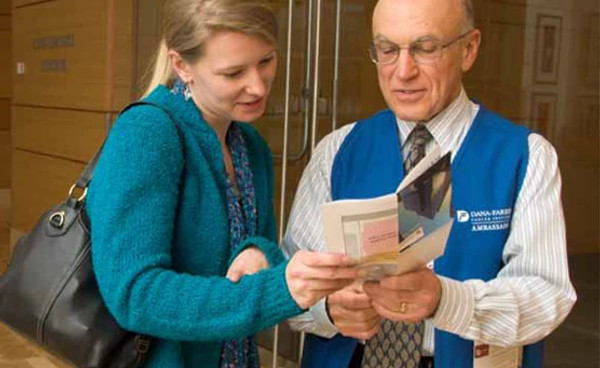Salivary and rare head and neck cancers account for an estimated 3-10% of all head and neck cancers (roughly 2,500 diagnoses annually in the U.S.) The Center for Salivary and Rare Head and Neck Cancers is devoted to treating patients with these rare and sometimes aggressive cancers arising from the head and neck.
Head and neck cancer treatment is already complex and necessitates expert involvement from head and neck surgeons, radiation oncologists, and medical oncologists. But tumors arising from the saliva glands and other rare entities require even more centralized expertise to deliver complex and highly personalized treatment approaches, which often include targeted therapies.
Our Center focuses on treating the following head and neck cancer types:
- Salivary gland carcinomas (adenoid cystic carcinoma, salivary duct carcinoma, adenocarcinoma, malignant mixed tumors, mucoepidermoid carcinoma, and other rare salivary gland cancers)
- NUT (midline) carcinoma
- Olfactory neuroblastoma (esthesioneuroblastoma)
- Sinonasal undifferentiated carcinoma (SNUC)
- Neuroendocrine tumors of the head and neck
Our Treatment Approach
The Center for Salivary and Rare Head and Neck Cancers offers several unique treatment and research opportunities largely unavailable elsewhere:
- We are among the first dedicated centers caring for patients with salivary and rare head and neck cancers and conducting research to develop more effective treatments.
- The Center offers a gateway for patients to access multidisciplinary experts specializing in the treatment of rare and complex head and neck tumors.
- Our Center's experts utilize molecular and immune-based metrics to choose therapies for patients with advanced or metastatic salivary or rare head and neck cancers, accessing a broad clinical portfolio to personalize the treatment approach.
- Dana-Farber currently has several clinical trials open for patients with salivary gland cancers and NUT (midline) carcinoma.
- Our collaboration with Institute- and Harvard-wide researchers aims to use patient-derived tumor models to study important cancer pathways and ultimately identify novel therapeutic targets.
Clinical Trials and Research
Many rare head and neck cancers lack standard or FDA-approved therapeutic options for managing advanced or metastatic disease; as a result, there is a crucial need for focused clinical trials. The Center for Salivary and Rare Head and Neck Cancers maintains a broad clinical trial portfolio aimed at developing novel therapies for these diseases in collaboration with Dana-Farber's experimental therapeutics program, the Center for Therapeutic Investigation (CTI).
Several translational laboratory investigators participate in our Center's research program – identifying novel therapeutic targets to integrate into the clinic. Our goal is to centralize both clinical and translational research efforts to improve outcomes for patients with the most challenging and complex head and neck cancer diagnoses.



